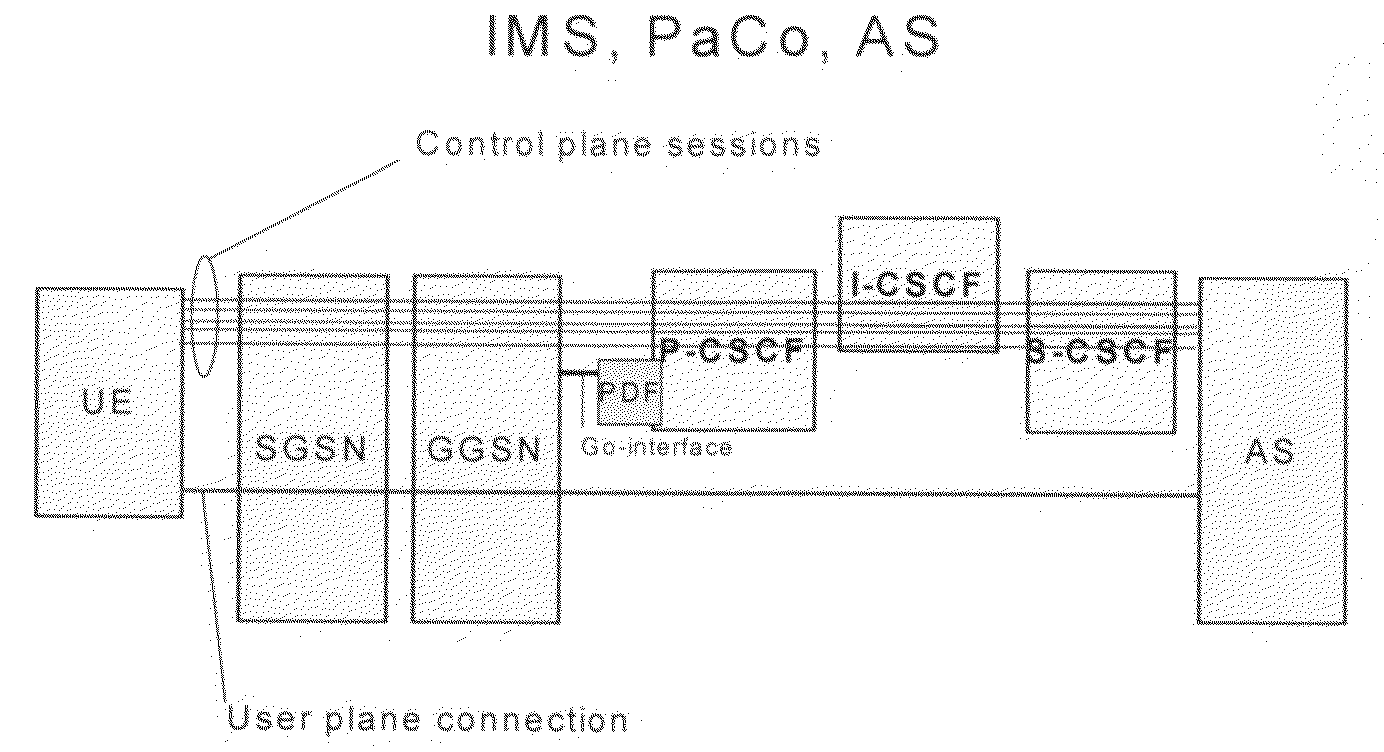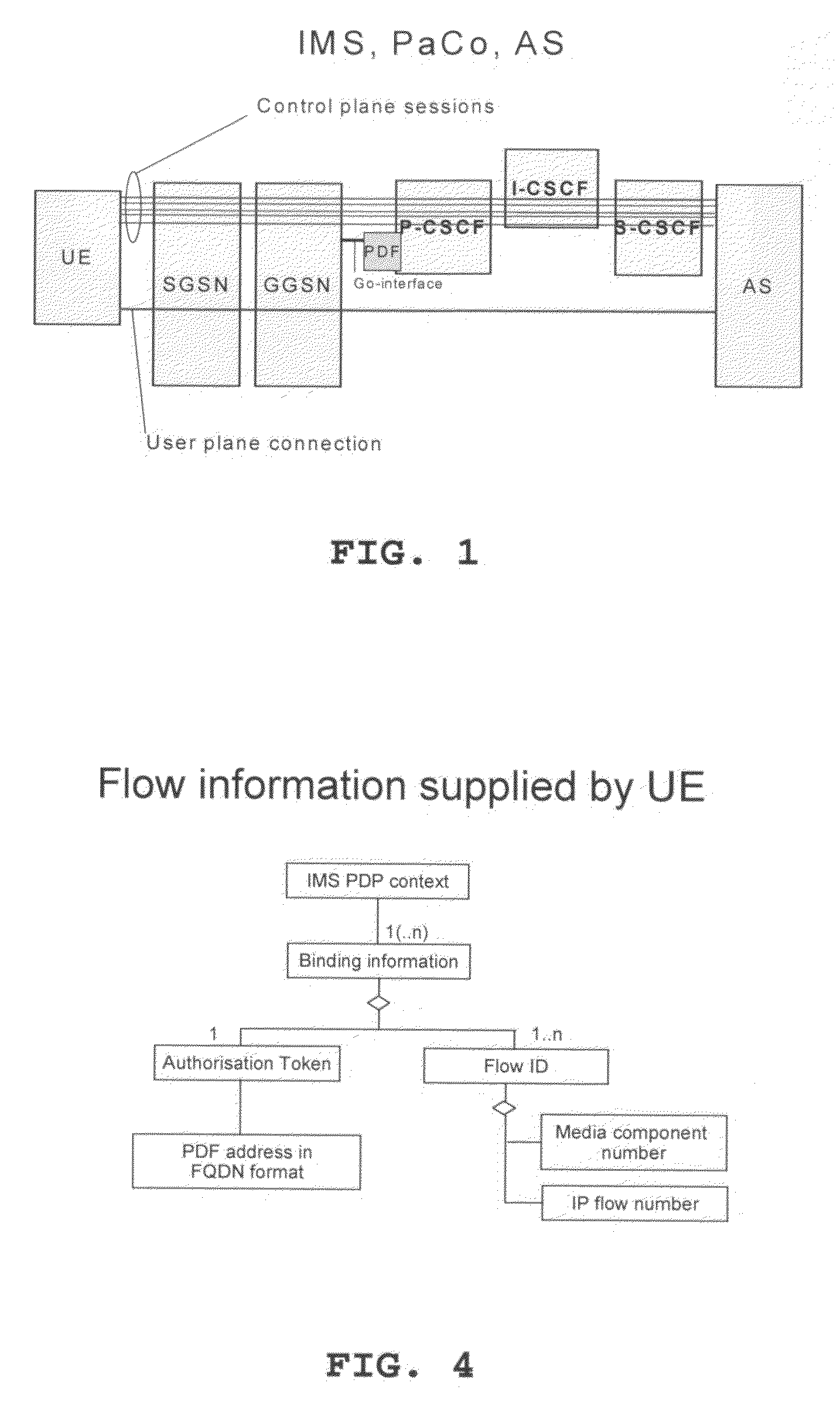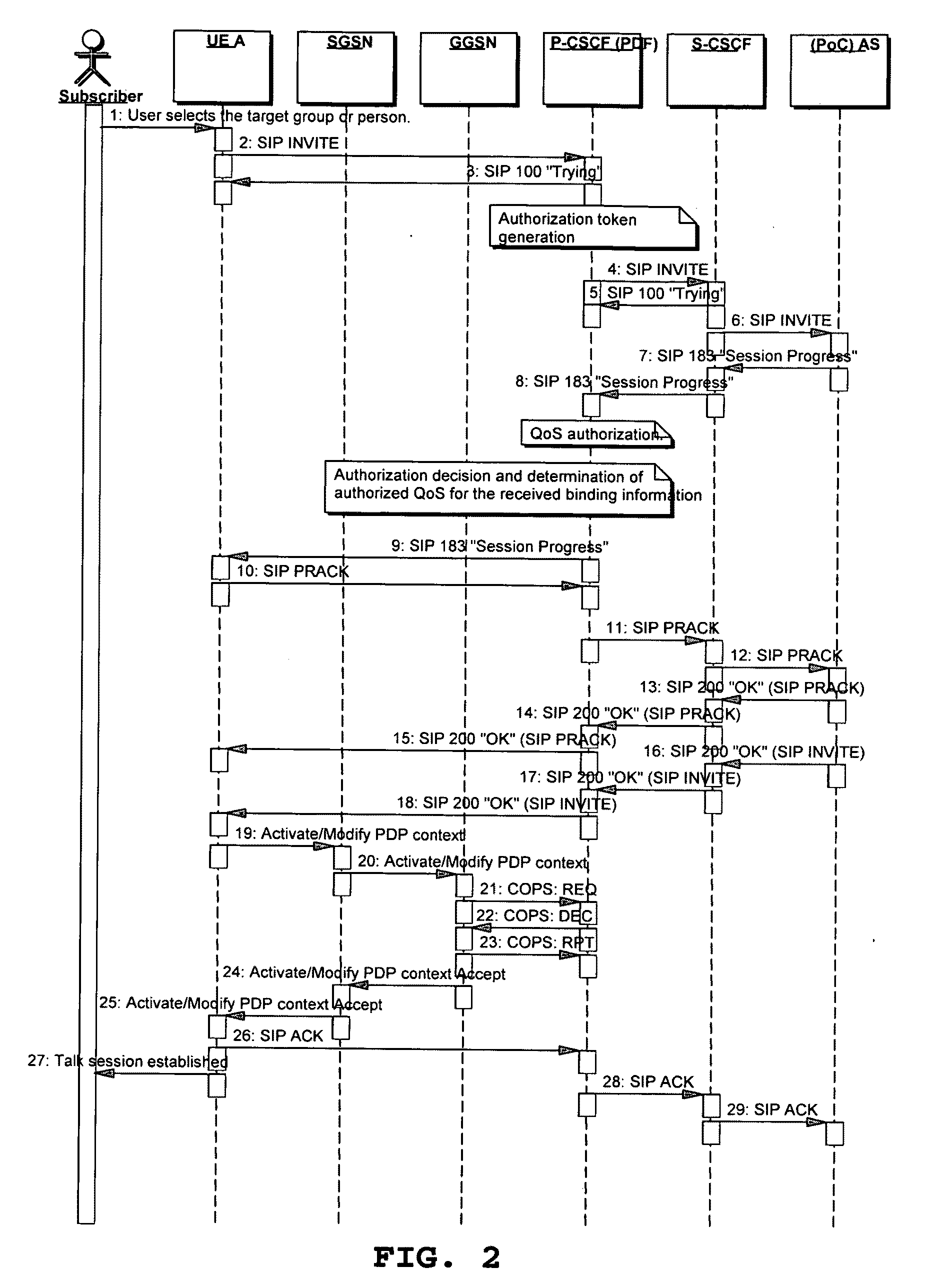Multiplexing media components of different sessions reference to related applications
a technology of multi-media components and related applications, applied in the field of multiplexing media components of different sessions, can solve the problems of not being able to re-use an existing pdp context, more than ten of them, and being totally impossible to handle for user equipmen
- Summary
- Abstract
- Description
- Claims
- Application Information
AI Technical Summary
Benefits of technology
Problems solved by technology
Method used
Image
Examples
embodiment 1
A New Media Component Adding
[0063]According to the first embodiment of the invention, each new Push to talk over Cellular (PoC) session is considered as a new media component adding to the same PDP context.
[0064]The PDF can define some way to bind the sessions to the same PDP context, which however is a pure question of the implementation for the Policy Decision Function (PDF). The PDF shall define a way to bind the sessions to the same PDP context, which however is a pure question of the implementation for the Policy Decision Function (PDF).
[0065]One solution option is that the same Authorization Token can be sent as an indication for all the SIP session to be multiplexed to use the same PDP context (not recommended solution). Normally, the User Equipment (UE) receives new binding information for each IP Multimedia Subsystem (IMS) session. In this option, the embodiment requires that the User Equipment (UE) shall allow that it receives the same binding id for several controlling se...
embodiment 2
Port Number Wildcard
[0106]The present embodiment utilizing a port number wildcard (as well as embodiment 3 utilizing filtering options) is not requiring media (re)-authorizing after the PDP context is once activated. Therefore these options are for more time critical 1-to-1-communications (personal Push to talk over Cellular (PoC) communications).
[0107]That is, adding the new media component according to the above embodiment 1 requires always the media authorization and Radio Access Bearer (RAB) assignment procedure, which might take too much time for Push to talk over Cellular (PoC) 1-to-1-communication set-up. Still, embodiment 1 can be used for Push to talk over Cellular (PoC) group (1-to-many) communications in which the user has always to request beforehand to join-in the group. This decision is up to the policy of the operator.
[0108]The procedure according to the present embodiment of a port wildcard option is depicted in FIGS. 6 and 7.
[0109]Specifically, messages 1 and 2 are ...
embodiment 3
The Port Filtering Option
[0122]Alternatively to maintaining the security, the Push to talk over Cellular (PoC) server could send the port number received in the Session Description Protocol (SDP) as usual. It is to be noted that the target address of the Push to talk over Cellular (PoC) server of the user is the same all the time (all the traffic shall pass the user's home Push to talk over Cellular (PoC) server). Still, the target port number is changing according to the group attached to. This way, the User Equipment (UE) knows which port to send to in each Push to talk over Cellular (PoC) session. However, because the Common Open Policy Service (COPS) protocol over the Go-interface supports only one port number or port ranges [min, max], the port numbers cannot be used by the Gateway GPRS Support Node (GGSN) in the Packet Classifier filters, i.e. the Policy Decision Function (PDF) shall wildcard the port number in the Packet Classifiers sent to the Gateway GPRS Support Node (GGSN...
PUM
 Login to View More
Login to View More Abstract
Description
Claims
Application Information
 Login to View More
Login to View More - R&D
- Intellectual Property
- Life Sciences
- Materials
- Tech Scout
- Unparalleled Data Quality
- Higher Quality Content
- 60% Fewer Hallucinations
Browse by: Latest US Patents, China's latest patents, Technical Efficacy Thesaurus, Application Domain, Technology Topic, Popular Technical Reports.
© 2025 PatSnap. All rights reserved.Legal|Privacy policy|Modern Slavery Act Transparency Statement|Sitemap|About US| Contact US: help@patsnap.com



